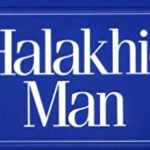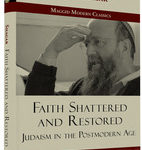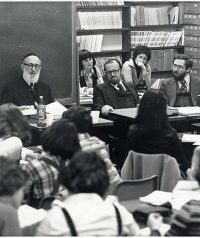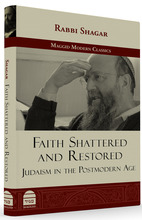Prior to the emergence of the Zohar in the early fourteenth century, the halakhic system that guided the normative behavior of practicing Jews remained closed, allowing for modification or additions only through terminology and methodology that neatly aligned with its specific fashions. Due to this reality, and the highly secretive and exclusive process of dissemination of Kabbalistic ideas, Kabbalistic practices were not assimilated into the corpus of halakha.[1]
However, despite these obstacles, the Zohar markedly penetrated the walls of the halakhic system, becoming a Kabbalistic work that many halakhic figures revered and reckoned with when formulating halakhic opinions. Its significant influence stemmed not only from its rich and impressive literally qualities, but also and most importantly due to it being perceived as a work of the Tanna Rabbi Shimon Bar-Yokhai. This forced halakhists to treat its directives with the utmost weight, as the halakhic system gives tremendous privilege to scholars from earlier generations.[2] While many halakhists who began to grapple with Kabbalistic ideas were hesitant to express Kabbalistic directives as completely obligatory in the same fashion as dictums from the Talmud, R. Joseph Karo, in his supremely influential Shulhan Arukh went as far to as to sanction and canonize many laws whose ultimate source was the Zohar. [3]
Following the example of R. Karo, who significantly utilized Kabbalah to guide his halakhic works, most subsequent halakhic works also incorporated much from works of Kabbalah, including the halakhic work known as the Mishnah Berurah. Written by R. Yisroel Meir Kagan in the beginning of the twentieth century, the Mishnah Berurah[4] is a commentary on the first section of the Shulhan Arukh, Orach Chayim. In this work, R. Kagan essentially summarizes later opinions, cites other local traditions, and provides further analysis on the law, in order to provide relevant guidance on how one should practice. While primarily drawing from a wellspring of traditional halakhic sources, the Mishnah Berurah also employs a wide variety of Kabbalistic sources in its halakhic analysis, using both later well-known Kabbalistic works such as the writings of the Arizal, but also more obscure earlier works, such as the Sefer Yetzirah and Heichlot. Beyond an explicitly stated methodology for using Kabbalistic sources to guide normative practice, the Mishnah Berurah treats and presents Kabbalistic material in a consistent and predictable array of patterns, which ultimately highlights and underscores both the separate status of Kabbalistic sources, and much of the general focus of Kabbalistic literature itself.
When engaging with Kabbalistic sources to inform normative halakhic practice, the Mishnah Berurah explicitly spells out how he utilizes Kabbalistic sources in general, and the specific manner in which he relates its suggestions to practices described by the Talmud and traditional poskim. After coming across a practice in which the Zohar differed from mainstream halakhic practice, the Mishnah Berurah explains[5]:
…in any case where the authorities of the Kabala or the Zohar dispute [a ruling of] the Gemara or the Poskim, one must follow the Gemara and the Poskim. However, where the authorities or the Kabala [rule] more stringently, one should also be stringent. If something is not mentioned in the Gemara or by the Poskim [then] even if it is mentioned in the Kabala one cannot enforce [a person] to act in accordance with it. Where an opposite ruling is not mentioned in the Talmud or by the Poskim, one should follow the words of the Kabala. In addition, where there is a dispute among the Poksim, the words of the Kabala should [be relied on to] decide [the dispute]. [6]
However, the Mishnah Berurah does not go to the same extent that another halakhic work, the Arukh Hashulhan, written by R. Yechiel Epstein does to deal with areas in which the Zohar contradicts the Talmud. While the Mishnah Berurah is willing to accept these contradictions, R. Epstein maintains that the Zohar cannot conflict with the Talmud whatsoever. He states in his halakhic methodology that[7]:
I received a tradition that the Zohar can never disagree with the Gemara unless the Gemara also has an internal argument. In a case where the Gemara decides the law the Zohar also accepts the decision. In places where the Zohar does not seem to agree with the Gemara, they did not understand the Zohar correctly and one must explain the opinion so that it is in accord with the Gemara.
The Mishnah Berurah’s approach of deferring to the ruling of the Talmud and poskim, even when the Zohar presents an opposing view, is highlighted in siman 95:2, in which the Shulhan Arukh says that one must bend his head and eyes down a bit during the silent recitation of the Shmoneh Esrei. Analyzing this law further in the Biur Halakhah portion, the Mishnah Berurah explains that according to the Talmud, no stringency exists which would require one to close their eyes as well. However, he quotes another opinion which notes that the Zohar did require one to have one’s eyes closed during this time. Subsequently, the Mishnah Berurah explains that it seems that the Zohar is “arguing in this [matter] with our Gemara” and as a result, he sides with the Talmud, that one does not need to shut one’s eyes during this prayer.[8]
However, the exact appropriation of this methodology of the Mishnah Berurah is understood by modern halakhic experts in different ways. Many, such as the Sdei Chemed, think that the methodology the Mishna Berurah spells out applies not only to the Zohar, but also to practices found in the writings of the Arizal.[9][10] However, the more likely opinion is that of R. Moshe Feinstein, who maintains that Kabbalistic sources used in this fashion are only those from the Zohar. Since the Arizal is a 16th century figure, R. Feinstein argues that he does not have the status of a Tanna that the Zohar has, and simply represents another Acharon who has an opinion in a given case. [11] Thus, it is only because the Zohar is considered a Tannaic source, that the Mishna Berurah must acknowledge its views, and decide between those and other earlier opinions. Stemming from this argument, the Sdei Chemed views the Mishnah Berurah’s words of “divrei kabbalah” as referring to both the Zohar and the Arizal, while R. Feinstein interprets them as only referring to the Zohar.
The Mishnah Berurah’s formalized approach to using Kabbalistic sources to inform halakhah, and his method to engage them with traditional halakhic sources remains quite consistent throughout his halakhic analysis, aside from the above-mentioned realm of Kabalistic contradictions with traditional sources.
When the Kabalistic point of view presents a more stringent view than that of traditional sources, the Mishnah Berurah consistently notes that “one should be stringent” to satisfy that approach. For example, in siman 4:23, which relates to the permissibility of reciting God’s name when one’s hands are physically or spiritually dirty, the Mishnah Berurah explains that according to traditional poskim, it is acceptable to clean one’s hands with any type of cleaning material. The Mishnah Berurah then contrasts this opinion with that of the Zohar, who strictly requires the usage of water as the only permissible cleaning agent. Subsequently, the Mishnah Berurah concludes that it is “fitting to be stringent” in accordance with the practice of the Zohar.
In his halakhic analyses, the Mishnah Berurah also frequently draws from Kabbalistic practices, even when those practices have no source in earlier traditions. However, he will frame the incumbency of these practices with less force than he does with Kabbalistic practices that do directly connect to traditional sources, such as those that represent a stringency in contrast to traditional practices. A famous example relates to the manner in which one should hold a cup upon which one is reciting kiddush or bentching. Traditional halakhic sources, as quoted by the Mishnah Berurah,[12] simply dictate that the cup should be held in one’s right hand, without any specific requirements concerning the fashion in which should it should be held in that hand. However, the Mishnah Berurah, explains that “al-pi kabbalah” the cup should be held in one’s palm, with one’s fingers firmly grasping the cup. However, the Mishnah Berurah does not suggest this practice with the incumbency of the phrase “one should be stringent.” Rather, he simply says that it is the “correct” practice to hold the cup in such a manner, a more suggestive than incumbent type of statement.
Furthermore, the Mishnah Berurah’s methodological consistency also continues into the last realm in which the Mishnah Berurah stated that he would factor in Kabbalistic sources, which relates to using Kabbalistic sources to decide between two diverging opinions of poskim. In siman 185,[13] which relates to the permissibility of blessing in a state of intoxication, the Mishnah Berurah explains that many opinions hold that it is permissible to recite birkhat ha-mazon when somewhat drunk, while the Mishnah Berurah also cites the Pri Migadim, who maintains that it is forbidden to recite a blessing under any state of drunkenness. However, ultimately, the Mishnah Berurah[14] sides with the former opinions due to the existence of the opinion of the Zohar, as quoted by the Magen Avraham, who accords with this former opinion.
While this methodology of using Kabbalistic sources seems to have been in reference only to practices from the Zohar, the Mishnah Berurah also quotes and considers other Kabbalistic sources in a similar manner, by noting when they offer a stringency, a novel practice, or pose a contradiction with previous opinions. While the Zohar is frequently quoted by the Mishnah Berurah, it is the later Kabbalistic works of the Arizal that are actually cited explicitly by the Mishnah Berurah most among Kabbalistic sources. [15]Furthermore, the range of Kabbalistic sources[16] which the Mishnah Berurah draws from is quite expansive. The sources range from the Sefer Yetzirah[17] and the Sefer Bahir[18] to the Sefer Chasidim [19]and the Heichalot[20]. Beyond explicitly referencing certain Kabbalistic works, the Mishnah Berurah also cites Kabbalistic laws and traditions with more general phrases. He will cite laws in the name of the “Mekubalim”[21] or “Haseforim,”[22] and frame certain practices as emanating from “al-pi-sod.” [23]
However, the Mishnah Berurah accords more weight to Kabbalistic practices from the Zohar then those found in these other Kabbalistic sources when informing normative practice. This seems to be a departure from the precise methodology he used when discussing Zoharic-Kabbalisitc practices. When considering a stringent practice recorded in the Zohar, the Mishnah Berurah, as mentioned earlier, will strongly suggest following that practice by stating that “it is fitting to be stringent.” Yet, with stringencies from all other Kabbalistic sources, the Mishnah Berurah will frame them in a less compulsory fashion, either by simply quoting those practices without providing any additional comments concerning whether one should follow that practice or not, or by stating that these practices are “tov” (good) or “nachon” (correct). For example, in siman 298:5, the Shulhan Arukh explains that one must light the Shabbat candles with some type of torch-like candle. Here, the Mishnah Berurah cites the practice of the Arizal, which was to specifically use a wax candle for this ceremony. The Mishnah Berurah then concludes by stating that it is “good” to use a wax candle as suggested by the Arizal.
Furthermore, due to other Kabbalistic sources lacking the Tannaic status of the Zohar, the Mishnah Berurah does not use them to decide between different positions of poskim. Rather, they are given equal weight to other poskim, and do not act as the final word on any given matter. For example, in siman 207:1,[24] the Mishnah Berurah records different views about the precise wording of the Borei Nefashot blessing. Many, including the Magen Avraham explain that the proper wording is “shebarata,” while others, including the Sefer Habahir, say the proper phrasing is “shebara.” The Kabbalistic work, Sefer Habahir, is mentioned by the Mishnah Berurah alongside corroborating opinions of the Tur and the Rosh. Nonetheless, the existence of this Kabbalistic opinion fails to compel the Mishnah Berurah to accord the law definitively with it; the Mishnah Berurah concludes that both approaches are equally correct.
While the Mishnah Berurah clearly maintains a positive stance concerning the inclusion of most Kabbalistic practices into normative halakhic discourse, there is one area of Kabbalistic practice where the Mishnah Berurah not only does not suggest, but also patently dissuades the typical, or even usually stringent individual from attempting to fulfill. This area is the complex and intimate system of Kavanot (intentions) prescribed by Kabbalistic literature. The Kavanot correspond different portions of prayer to different aspects of the Kabbalistic system of Sefirot and Heavenly unity. The Mishnah Berurah explains[25]:
a person should not have in mind [the significance of the Divine] Names and unity, but should merely pray simply, noting the implication of the words with the application of his heart. [That is] unless someone who has entered into the secrets of Ha-Sheym and is able to have [such matter] in mind with his heart and soul and the fear [of him]. Otherwise, Heaven forbid, one will cause grave damage if [he does so] …. The Rashal writes that… even after studying the secrets of kabala, the Rash said that he prayed like a day old child.
Thus, due to the complexities of these types of mindsets during prayer, and the potential of committing a significant error, the Mishnah Berurah holds that it is better to pray in the manner of a simple child, even if one is familiar with the proper Kabbalistic intentions.
Although the Mishnah Berurah utilizes Kabbalistic sources throughout all six sections of his laws, the Mishnah Berurah typically draws from them no more than once or twice in a given topic of laws. However, when discussing sexually connoted topics, the Mishnah Berurah employs Kabbalistic sources quite frequently and consistently. In siman 240 alone, which is an isolated section entirely devoted to laws of cohabiting with one’s wife, the Mishnah Berurah references Kabbalistic sources such as the Arizal and Zohar nearly fifteen times.
A striking usage of Kabbalistic sources relating to this topic is from siman 240:1, in which the Shulhan Arukh explains that marital relations can only be had at the times specifically prescribed by the Torah. In the Biur Halacha section on this opening comment of the Shulhan Arukh, the Mishnah Berurah enters into a discussion about whether it is permissible to have relations with one’s wife when it would be impossible for the intercourse to result in producing children. Specifically, concerning having relations with a wife who is barren, or too old to have children, the Mishnah Berurah cites the writings of the “Mekubalim” that explain that it is permissible to do so because even in these types of relations “holy souls are created.”
Another example of the Mishnah Berurah relying on Kabbalistic sources when discussing sexually related topics occurs in the laws of Yom Kippur. The Shulhan Arukh,[26] explains that having a chance ejaculation of semen on Yom Kippur is not a good omen for the upcoming year. The Mishnah Berurah explains that “the seforim” suggest that the only way to properly combat and be “mitaken” this potential bad omen is to have a lifelong commitment to Torah. Here, “the seforim” refers to Kabalistic sources.
However, it is not merely a coincidence that the realm of sexuality is where the Mishnah Berurah incorporates the most Kabbalistic sources. Moreover, it is not as though there is a dearth of traditional sources for the Mishna Berurah to draw from, as the Talmud discuss these topics in numerous places, and with particularly strong expressions. [27]Rather, it is likely due to the unique conception of human sexuality that exists in Kabbalistic literature, especially in the Zohar, that the Mishna Berurah chooses to incorporate these sources so prevalently. Believing that everything that occurs in the physical world is a parallel to that which occurs in the Divine world of the Sefirot, Kabbalists believed that human sexuality and the act of intercourse itself was similar to the connection that occurs between the Sefirot Yesod and Shekhinah.[28] The Zohar, in its introduction, goes as far as to characterize the emission of divine providence that results from the connection of these two Sefiort as “zera,” which is a reference to not just any seed, but human semen. As a result, in the eyes of Kabbalah, and its immensely theurgist philosophy, human intercourse and the symbolic nature of human reproductive materials were elevated and imbued with a marked sense of sanctity, given that these acts had the potential to affect the unity of the Divine world. Thus, the Mishnah Berurah’s heavy reliance on Kabbalistic sources in this realm is not too unexpected considering the unique status given by Kabbalah to the realm of human sexuality.
As demonstrated, the Mishnah Berurah uses Kabbalistic sources a multitude of times to inform normative Halakhic practice. However, in doing so, the Mishnah Berurah consistently only quotes the Kabbalistic suggested practice itself, while never explaining the detailed Kabbalistic reason for the given practice. Throughout the entirety of the six volumes of the Mishnah Berurah, the Mishnah Berurah never mentions the fundamental Kabbalistic concept of the Sefirot, and omits incorporating the variety of Heavenly worlds that are sketched out in the writings of the Arizal, even though both are undoubtedly crucial foundations for most Kabbalistic practices. This differs from the Mishnah Berurah’s treatment of practices from traditional halakhic sources, with which he will extensively explain the reason and logic for acting in such a manner.
The Mishnah Berurah’s omission of Kabbalistic explanations generally manifests itself in a few distinct ways within his halakhic analyses. One approach of the Mishnah Berurah is to simply quote a Kabbalistic practice without making any reference to its reasoning whatsoever, or by saying simply that the reason is “al-pi kabbalah,” but then not continuing on to explain that reasoning. For example, the Mishnah Berurah does not explain the reason for the Kabbalistic practice mentioned earlier, relating to the proper way to hold a cup over which one is making a blessing. Thus, although the Zohar explains that the five fingers surrounding the cup are supposed to be representative of the five upper Sefirot that surround the lowest Sefirah, Shekhinah,[29] the Mishna Berurah does not include this explanation.
The Mishnah Berurah also omits Kabbalistic explanations and terminology in a more indirect way by explaining a reason for a law in a metaphoric fashion, while somewhat watering down the Kabbalistic concepts that undoubtedly lie behind the metaphor and practice. For example, concerning washing one’s hand in the morning, the Shulhan Arukh explains in siman four that one should wash each hand three times. The Mishnah Berurah[30] further adds that one should wash his hands in a set sequence with the right hand first, followed by the left hand. As he explains elsewhere[31], the Mishnah Berurah explains the reason that the right is given precedence is because it is more “chashuv” (important) than the left, in that the right side is associated with mercy and the left side with strict judgment; as a result, the washing sequence is meant to give precedence to mercy over judgment. However, while not in any way indicated in the text of the Mishnah Berurah, the source and actual content of this idea is rooted in the system of the Sefirot, in which the right side of the Sefirotic path is Kabalistically associated with mercy, while the left is related to judgment, an understanding essentially left out of the Mishnah Berurah’s explanation of the washing practice.
The Mishnah Berurah’s omission of explicit Kabbalistic concepts and explanations is likely due to the same reason he dissuaded people from attempting to incorporate Kabbalistic intentions during their prayers. As he explained there, the Mishnah Berurah is concerned that one could “cause grave damage”[32] by trying to relate to the deeper Kabbalistic meanings of the prayers because it potentially could lead to heretical acts and mindsets while praying. Similarly, whether it be concerning how to properly hold the cup during the Kiddush blessing, or washing in the morning, the Mishnah Berurah is hesitant to cite the Kabbalistic reasoning out of fear that it will detract from the proper focus needed when performing the halakhic practice, due to the complexity and esoteric nature of the Kabbalistic concepts.
Throughout the six volumes of this halakhic work, the Mishnah Berurah employs all types of Kabbalistic sources in its attempt to inform normative practice. Spelling out how they will be utilized from nearly the beginning of the work, the Mishnah Berurah consistently sticks to his methodology when evaluating the utility of Zoharic sources for halakhic practices. When relating to later Kabbalistic sources, the Mishnah Berurah ultimately uses a similar approach, yet in a milder manner, granting them less authority to create incumbent practices. Furthermore, the Mishnah Berurah’s omission of any Kabbalistic reasoning, such as the Sefirot, and his concentrated usage of Kabbalistic sources in the realm of sexuality underscore the different focus and status of these ideas within the halakhic system of the Mishnah Berurah.
[1] This observation is made forcefully by the Jewish historian, Jacob Katz. Jacob Katz, Divine Law in Human Hands: Case Studies in Halakhic Flexibility (Jerusalem: Magnes Press, 1998), 32.
[2] Ibid., 36.
[3] Ibid., 54.
[4] When I speak of the Mishnah Berurah in this paper, I am referring to the name the halakhik book is commonly known as. However, I also analyze the other two portions in the Mishnah Berurah that were written by R. Kagan called the Biur Halakha and Sha’ar Ha-Tzion.
[5] Translation from: Mishnah Berurah: The Classic Commentary to Shulchan Aruch Orach Chayim, Comprising the Laws of Daily Jewish Conduct, Hebrew-English ed., transl by Yosef ben Efraim Karo and Yisrael Meir ben Aryeh Zev, (Jerusalem, Pisgah Foundation, 1980), Vol. 2, 21.
[6] In following this approach, the Mishnah Berurah essentially parallels the approach detailed by R. Karo when he formulated the laws in his Halakhic works. Jacob Katz locates R. Karo’s approach in a responsum found in the responsa of R Karo’s nephew; Katz, Divine Law in Human Hands,38.
[7] Translation from Michael Rosen, “The Interaction of Kabbalah and Halachah in the Aruch ha-Shulchan,” available at: www.maqom.com.
[8] However, while the Mishna Berurah seems to be content with this analysis himself, he does mention the opinion of the Taz, who reconciles the Zohar with the Talmud, and frames the Zohar as simply being a more stringent opinion and not necessarily a contradictory one.
[9] He was a 19th century Israeli rabbi whose name was Chaim Hezekiah Medini, but was commonly known by his halakhic work, the Sdei Chemed.
[10] Dirshu version of the Mishna Berurah (Jerusalem: 2013), Vol. 1, 68.
[11] The above information in footnote 9 applies to this example as well.
[12] siman 185:4:15.
[13] siman 185:5:7.
[14] In the Mishnah Berurah portion here, he does not spell out the names of the different opinions. However, in footnote 60 of the Sha’ar Ha-Tzion, he spells out the names of the different sides.
[15] When surveying the Mishnah Berurah, I came across 62 direct quotes of the Arizal and only 56 direct mentions of the Zohar. However, if one were to assume the Mishnah Berurah’s source of “al pi- kabbalah” is only a reference to the Zohar, then the Zohar would be more frequent.
[16] The only notable Kabbalistic figure whom I did not consider in my analysis was that of the Shelah, whom the Mishnah Berurah does quote from quite extensively. This is due to the unique nature of the Halakhic teachings of the Shelah, as pointed out by Jacob Katz. He explains that the Shelah treated the realms of Halakhah and Kabbalah separately, without “any blurring, in practice, of the lines between the two disciplines.”; Jacob Katz, Divine Law in Human Hands: Case Studies in Halakhic Flexibility (Jerusalem: Magnes Press, 1998),83.
[17] The Mishnah Berurah quotes this work in siman 55:1:4.
[18] The Mishnah Berurah quotes this work in siman 207:3: footnote three of the Sha’ar Ha-Tzion.
[19] The Mishnah Berurah cites this work in simanim 56:1:1, 138:1:5, 185:1:1, 340:1:1 and then a few other times in footnotes of the Sha’ar Ha-Tzion.
[20] The Mishnah Berurah quotes this work in siman 125:5:10.
[21] Notable examples in which the Mishnah Berurah cites this are in simanim 240:8, footnote 18 of the Sha’ar Ha-Tzion, 240, footnote 3, and 167:5:33.
[22] The Mishnah Berurah uses this term in simanim 167:4, 175:2, 290:3 and once each in simanim 48, 52, 239, 240, 250, 417, 490, and 673.
[23] The Mishnah Berurah uses this term in simanim 21:3:15, 36:2:4, 650:8:15, 36:27, footnote four, 122:2:9, 600:2:4, and 651, footnote 43.
[24] In footnote 3 of the Shaarei Tzion.
[25] Translation from Mishnah Berurah: The Classic Commentary to Shulchan Aruch Orach Chayim, Comprising the Laws of Daily Jewish Conduct, Hebrew-English ed., Transl. by Yosef ben Efraim Karo and Yisrael Meir ben Aryeh Zev (Jerusalem, Pisgah Foundation, 1980), Vol. 4, 100.
[26] siman 615:2 and the Mishnah Berurah which I subsequently quote is number 3 in that siman.
[27] See for example Tractate Niddah, 13a which proclaims that anyone who ejaculated deserves “death.”
[28] This is an idea of Professor Dauber’s which he developed in class on April twentieth, when discussing a passage in the Zohar’s introduction.
[29] I thank Professor Dauber for pointing out this reason when we learnt the Zohar’s introduction.
[30] siman 4:2:10.
[31] siman 2:4:15.
[32] Translation from: Mishnah Berurah: The Classic Commentary to Shulchan Aruch, Orach Chayim, Comprising the Laws of Daily Jewish Conduct, Hebrew-English ed., transl by Yosef ben Efraim Karo and Yisrael Meir ben Aryeh Zev, (Jerusalem, Pisgah Foundation, 1980), Vol. 2, 21.











The Mishnah Berurah’s Treatment of Kabbalistic Sources
Prior to the emergence of the Zohar in the early fourteenth century, the halakhic system that guided the normative behavior of practicing Jews remained closed, allowing for modification or additions only through terminology and methodology that neatly aligned with its specific fashions. Due to this reality, and the highly secretive and exclusive process of dissemination of Kabbalistic ideas, Kabbalistic practices were not assimilated into the corpus of halakha.[1]
However, despite these obstacles, the Zohar markedly penetrated the walls of the halakhic system, becoming a Kabbalistic work that many halakhic figures revered and reckoned with when formulating halakhic opinions. Its significant influence stemmed not only from its rich and impressive literally qualities, but also and most importantly due to it being perceived as a work of the Tanna Rabbi Shimon Bar-Yokhai. This forced halakhists to treat its directives with the utmost weight, as the halakhic system gives tremendous privilege to scholars from earlier generations.[2] While many halakhists who began to grapple with Kabbalistic ideas were hesitant to express Kabbalistic directives as completely obligatory in the same fashion as dictums from the Talmud, R. Joseph Karo, in his supremely influential Shulhan Arukh went as far to as to sanction and canonize many laws whose ultimate source was the Zohar. [3]
Following the example of R. Karo, who significantly utilized Kabbalah to guide his halakhic works, most subsequent halakhic works also incorporated much from works of Kabbalah, including the halakhic work known as the Mishnah Berurah. Written by R. Yisroel Meir Kagan in the beginning of the twentieth century, the Mishnah Berurah[4] is a commentary on the first section of the Shulhan Arukh, Orach Chayim. In this work, R. Kagan essentially summarizes later opinions, cites other local traditions, and provides further analysis on the law, in order to provide relevant guidance on how one should practice. While primarily drawing from a wellspring of traditional halakhic sources, the Mishnah Berurah also employs a wide variety of Kabbalistic sources in its halakhic analysis, using both later well-known Kabbalistic works such as the writings of the Arizal, but also more obscure earlier works, such as the Sefer Yetzirah and Heichlot. Beyond an explicitly stated methodology for using Kabbalistic sources to guide normative practice, the Mishnah Berurah treats and presents Kabbalistic material in a consistent and predictable array of patterns, which ultimately highlights and underscores both the separate status of Kabbalistic sources, and much of the general focus of Kabbalistic literature itself.
When engaging with Kabbalistic sources to inform normative halakhic practice, the Mishnah Berurah explicitly spells out how he utilizes Kabbalistic sources in general, and the specific manner in which he relates its suggestions to practices described by the Talmud and traditional poskim. After coming across a practice in which the Zohar differed from mainstream halakhic practice, the Mishnah Berurah explains[5]:
However, the Mishnah Berurah does not go to the same extent that another halakhic work, the Arukh Hashulhan, written by R. Yechiel Epstein does to deal with areas in which the Zohar contradicts the Talmud. While the Mishnah Berurah is willing to accept these contradictions, R. Epstein maintains that the Zohar cannot conflict with the Talmud whatsoever. He states in his halakhic methodology that[7]:
The Mishnah Berurah’s approach of deferring to the ruling of the Talmud and poskim, even when the Zohar presents an opposing view, is highlighted in siman 95:2, in which the Shulhan Arukh says that one must bend his head and eyes down a bit during the silent recitation of the Shmoneh Esrei. Analyzing this law further in the Biur Halakhah portion, the Mishnah Berurah explains that according to the Talmud, no stringency exists which would require one to close their eyes as well. However, he quotes another opinion which notes that the Zohar did require one to have one’s eyes closed during this time. Subsequently, the Mishnah Berurah explains that it seems that the Zohar is “arguing in this [matter] with our Gemara” and as a result, he sides with the Talmud, that one does not need to shut one’s eyes during this prayer.[8]
However, the exact appropriation of this methodology of the Mishnah Berurah is understood by modern halakhic experts in different ways. Many, such as the Sdei Chemed, think that the methodology the Mishna Berurah spells out applies not only to the Zohar, but also to practices found in the writings of the Arizal.[9][10] However, the more likely opinion is that of R. Moshe Feinstein, who maintains that Kabbalistic sources used in this fashion are only those from the Zohar. Since the Arizal is a 16th century figure, R. Feinstein argues that he does not have the status of a Tanna that the Zohar has, and simply represents another Acharon who has an opinion in a given case. [11] Thus, it is only because the Zohar is considered a Tannaic source, that the Mishna Berurah must acknowledge its views, and decide between those and other earlier opinions. Stemming from this argument, the Sdei Chemed views the Mishnah Berurah’s words of “divrei kabbalah” as referring to both the Zohar and the Arizal, while R. Feinstein interprets them as only referring to the Zohar.
The Mishnah Berurah’s formalized approach to using Kabbalistic sources to inform halakhah, and his method to engage them with traditional halakhic sources remains quite consistent throughout his halakhic analysis, aside from the above-mentioned realm of Kabalistic contradictions with traditional sources.
When the Kabalistic point of view presents a more stringent view than that of traditional sources, the Mishnah Berurah consistently notes that “one should be stringent” to satisfy that approach. For example, in siman 4:23, which relates to the permissibility of reciting God’s name when one’s hands are physically or spiritually dirty, the Mishnah Berurah explains that according to traditional poskim, it is acceptable to clean one’s hands with any type of cleaning material. The Mishnah Berurah then contrasts this opinion with that of the Zohar, who strictly requires the usage of water as the only permissible cleaning agent. Subsequently, the Mishnah Berurah concludes that it is “fitting to be stringent” in accordance with the practice of the Zohar.
In his halakhic analyses, the Mishnah Berurah also frequently draws from Kabbalistic practices, even when those practices have no source in earlier traditions. However, he will frame the incumbency of these practices with less force than he does with Kabbalistic practices that do directly connect to traditional sources, such as those that represent a stringency in contrast to traditional practices. A famous example relates to the manner in which one should hold a cup upon which one is reciting kiddush or bentching. Traditional halakhic sources, as quoted by the Mishnah Berurah,[12] simply dictate that the cup should be held in one’s right hand, without any specific requirements concerning the fashion in which should it should be held in that hand. However, the Mishnah Berurah, explains that “al-pi kabbalah” the cup should be held in one’s palm, with one’s fingers firmly grasping the cup. However, the Mishnah Berurah does not suggest this practice with the incumbency of the phrase “one should be stringent.” Rather, he simply says that it is the “correct” practice to hold the cup in such a manner, a more suggestive than incumbent type of statement.
Furthermore, the Mishnah Berurah’s methodological consistency also continues into the last realm in which the Mishnah Berurah stated that he would factor in Kabbalistic sources, which relates to using Kabbalistic sources to decide between two diverging opinions of poskim. In siman 185,[13] which relates to the permissibility of blessing in a state of intoxication, the Mishnah Berurah explains that many opinions hold that it is permissible to recite birkhat ha-mazon when somewhat drunk, while the Mishnah Berurah also cites the Pri Migadim, who maintains that it is forbidden to recite a blessing under any state of drunkenness. However, ultimately, the Mishnah Berurah[14] sides with the former opinions due to the existence of the opinion of the Zohar, as quoted by the Magen Avraham, who accords with this former opinion.
While this methodology of using Kabbalistic sources seems to have been in reference only to practices from the Zohar, the Mishnah Berurah also quotes and considers other Kabbalistic sources in a similar manner, by noting when they offer a stringency, a novel practice, or pose a contradiction with previous opinions. While the Zohar is frequently quoted by the Mishnah Berurah, it is the later Kabbalistic works of the Arizal that are actually cited explicitly by the Mishnah Berurah most among Kabbalistic sources. [15]Furthermore, the range of Kabbalistic sources[16] which the Mishnah Berurah draws from is quite expansive. The sources range from the Sefer Yetzirah[17] and the Sefer Bahir[18] to the Sefer Chasidim [19]and the Heichalot[20]. Beyond explicitly referencing certain Kabbalistic works, the Mishnah Berurah also cites Kabbalistic laws and traditions with more general phrases. He will cite laws in the name of the “Mekubalim”[21] or “Haseforim,”[22] and frame certain practices as emanating from “al-pi-sod.” [23]
However, the Mishnah Berurah accords more weight to Kabbalistic practices from the Zohar then those found in these other Kabbalistic sources when informing normative practice. This seems to be a departure from the precise methodology he used when discussing Zoharic-Kabbalisitc practices. When considering a stringent practice recorded in the Zohar, the Mishnah Berurah, as mentioned earlier, will strongly suggest following that practice by stating that “it is fitting to be stringent.” Yet, with stringencies from all other Kabbalistic sources, the Mishnah Berurah will frame them in a less compulsory fashion, either by simply quoting those practices without providing any additional comments concerning whether one should follow that practice or not, or by stating that these practices are “tov” (good) or “nachon” (correct). For example, in siman 298:5, the Shulhan Arukh explains that one must light the Shabbat candles with some type of torch-like candle. Here, the Mishnah Berurah cites the practice of the Arizal, which was to specifically use a wax candle for this ceremony. The Mishnah Berurah then concludes by stating that it is “good” to use a wax candle as suggested by the Arizal.
Furthermore, due to other Kabbalistic sources lacking the Tannaic status of the Zohar, the Mishnah Berurah does not use them to decide between different positions of poskim. Rather, they are given equal weight to other poskim, and do not act as the final word on any given matter. For example, in siman 207:1,[24] the Mishnah Berurah records different views about the precise wording of the Borei Nefashot blessing. Many, including the Magen Avraham explain that the proper wording is “shebarata,” while others, including the Sefer Habahir, say the proper phrasing is “shebara.” The Kabbalistic work, Sefer Habahir, is mentioned by the Mishnah Berurah alongside corroborating opinions of the Tur and the Rosh. Nonetheless, the existence of this Kabbalistic opinion fails to compel the Mishnah Berurah to accord the law definitively with it; the Mishnah Berurah concludes that both approaches are equally correct.
While the Mishnah Berurah clearly maintains a positive stance concerning the inclusion of most Kabbalistic practices into normative halakhic discourse, there is one area of Kabbalistic practice where the Mishnah Berurah not only does not suggest, but also patently dissuades the typical, or even usually stringent individual from attempting to fulfill. This area is the complex and intimate system of Kavanot (intentions) prescribed by Kabbalistic literature. The Kavanot correspond different portions of prayer to different aspects of the Kabbalistic system of Sefirot and Heavenly unity. The Mishnah Berurah explains[25]:
Thus, due to the complexities of these types of mindsets during prayer, and the potential of committing a significant error, the Mishnah Berurah holds that it is better to pray in the manner of a simple child, even if one is familiar with the proper Kabbalistic intentions.
Although the Mishnah Berurah utilizes Kabbalistic sources throughout all six sections of his laws, the Mishnah Berurah typically draws from them no more than once or twice in a given topic of laws. However, when discussing sexually connoted topics, the Mishnah Berurah employs Kabbalistic sources quite frequently and consistently. In siman 240 alone, which is an isolated section entirely devoted to laws of cohabiting with one’s wife, the Mishnah Berurah references Kabbalistic sources such as the Arizal and Zohar nearly fifteen times.
A striking usage of Kabbalistic sources relating to this topic is from siman 240:1, in which the Shulhan Arukh explains that marital relations can only be had at the times specifically prescribed by the Torah. In the Biur Halacha section on this opening comment of the Shulhan Arukh, the Mishnah Berurah enters into a discussion about whether it is permissible to have relations with one’s wife when it would be impossible for the intercourse to result in producing children. Specifically, concerning having relations with a wife who is barren, or too old to have children, the Mishnah Berurah cites the writings of the “Mekubalim” that explain that it is permissible to do so because even in these types of relations “holy souls are created.”
Another example of the Mishnah Berurah relying on Kabbalistic sources when discussing sexually related topics occurs in the laws of Yom Kippur. The Shulhan Arukh,[26] explains that having a chance ejaculation of semen on Yom Kippur is not a good omen for the upcoming year. The Mishnah Berurah explains that “the seforim” suggest that the only way to properly combat and be “mitaken” this potential bad omen is to have a lifelong commitment to Torah. Here, “the seforim” refers to Kabalistic sources.
However, it is not merely a coincidence that the realm of sexuality is where the Mishnah Berurah incorporates the most Kabbalistic sources. Moreover, it is not as though there is a dearth of traditional sources for the Mishna Berurah to draw from, as the Talmud discuss these topics in numerous places, and with particularly strong expressions. [27]Rather, it is likely due to the unique conception of human sexuality that exists in Kabbalistic literature, especially in the Zohar, that the Mishna Berurah chooses to incorporate these sources so prevalently. Believing that everything that occurs in the physical world is a parallel to that which occurs in the Divine world of the Sefirot, Kabbalists believed that human sexuality and the act of intercourse itself was similar to the connection that occurs between the Sefirot Yesod and Shekhinah.[28] The Zohar, in its introduction, goes as far as to characterize the emission of divine providence that results from the connection of these two Sefiort as “zera,” which is a reference to not just any seed, but human semen. As a result, in the eyes of Kabbalah, and its immensely theurgist philosophy, human intercourse and the symbolic nature of human reproductive materials were elevated and imbued with a marked sense of sanctity, given that these acts had the potential to affect the unity of the Divine world. Thus, the Mishnah Berurah’s heavy reliance on Kabbalistic sources in this realm is not too unexpected considering the unique status given by Kabbalah to the realm of human sexuality.
As demonstrated, the Mishnah Berurah uses Kabbalistic sources a multitude of times to inform normative Halakhic practice. However, in doing so, the Mishnah Berurah consistently only quotes the Kabbalistic suggested practice itself, while never explaining the detailed Kabbalistic reason for the given practice. Throughout the entirety of the six volumes of the Mishnah Berurah, the Mishnah Berurah never mentions the fundamental Kabbalistic concept of the Sefirot, and omits incorporating the variety of Heavenly worlds that are sketched out in the writings of the Arizal, even though both are undoubtedly crucial foundations for most Kabbalistic practices. This differs from the Mishnah Berurah’s treatment of practices from traditional halakhic sources, with which he will extensively explain the reason and logic for acting in such a manner.
The Mishnah Berurah’s omission of Kabbalistic explanations generally manifests itself in a few distinct ways within his halakhic analyses. One approach of the Mishnah Berurah is to simply quote a Kabbalistic practice without making any reference to its reasoning whatsoever, or by saying simply that the reason is “al-pi kabbalah,” but then not continuing on to explain that reasoning. For example, the Mishnah Berurah does not explain the reason for the Kabbalistic practice mentioned earlier, relating to the proper way to hold a cup over which one is making a blessing. Thus, although the Zohar explains that the five fingers surrounding the cup are supposed to be representative of the five upper Sefirot that surround the lowest Sefirah, Shekhinah,[29] the Mishna Berurah does not include this explanation.
The Mishnah Berurah also omits Kabbalistic explanations and terminology in a more indirect way by explaining a reason for a law in a metaphoric fashion, while somewhat watering down the Kabbalistic concepts that undoubtedly lie behind the metaphor and practice. For example, concerning washing one’s hand in the morning, the Shulhan Arukh explains in siman four that one should wash each hand three times. The Mishnah Berurah[30] further adds that one should wash his hands in a set sequence with the right hand first, followed by the left hand. As he explains elsewhere[31], the Mishnah Berurah explains the reason that the right is given precedence is because it is more “chashuv” (important) than the left, in that the right side is associated with mercy and the left side with strict judgment; as a result, the washing sequence is meant to give precedence to mercy over judgment. However, while not in any way indicated in the text of the Mishnah Berurah, the source and actual content of this idea is rooted in the system of the Sefirot, in which the right side of the Sefirotic path is Kabalistically associated with mercy, while the left is related to judgment, an understanding essentially left out of the Mishnah Berurah’s explanation of the washing practice.
The Mishnah Berurah’s omission of explicit Kabbalistic concepts and explanations is likely due to the same reason he dissuaded people from attempting to incorporate Kabbalistic intentions during their prayers. As he explained there, the Mishnah Berurah is concerned that one could “cause grave damage”[32] by trying to relate to the deeper Kabbalistic meanings of the prayers because it potentially could lead to heretical acts and mindsets while praying. Similarly, whether it be concerning how to properly hold the cup during the Kiddush blessing, or washing in the morning, the Mishnah Berurah is hesitant to cite the Kabbalistic reasoning out of fear that it will detract from the proper focus needed when performing the halakhic practice, due to the complexity and esoteric nature of the Kabbalistic concepts.
Throughout the six volumes of this halakhic work, the Mishnah Berurah employs all types of Kabbalistic sources in its attempt to inform normative practice. Spelling out how they will be utilized from nearly the beginning of the work, the Mishnah Berurah consistently sticks to his methodology when evaluating the utility of Zoharic sources for halakhic practices. When relating to later Kabbalistic sources, the Mishnah Berurah ultimately uses a similar approach, yet in a milder manner, granting them less authority to create incumbent practices. Furthermore, the Mishnah Berurah’s omission of any Kabbalistic reasoning, such as the Sefirot, and his concentrated usage of Kabbalistic sources in the realm of sexuality underscore the different focus and status of these ideas within the halakhic system of the Mishnah Berurah.
[1] This observation is made forcefully by the Jewish historian, Jacob Katz. Jacob Katz, Divine Law in Human Hands: Case Studies in Halakhic Flexibility (Jerusalem: Magnes Press, 1998), 32.
[2] Ibid., 36.
[3] Ibid., 54.
[4] When I speak of the Mishnah Berurah in this paper, I am referring to the name the halakhik book is commonly known as. However, I also analyze the other two portions in the Mishnah Berurah that were written by R. Kagan called the Biur Halakha and Sha’ar Ha-Tzion.
[5] Translation from: Mishnah Berurah: The Classic Commentary to Shulchan Aruch Orach Chayim, Comprising the Laws of Daily Jewish Conduct, Hebrew-English ed., transl by Yosef ben Efraim Karo and Yisrael Meir ben Aryeh Zev, (Jerusalem, Pisgah Foundation, 1980), Vol. 2, 21.
[6] In following this approach, the Mishnah Berurah essentially parallels the approach detailed by R. Karo when he formulated the laws in his Halakhic works. Jacob Katz locates R. Karo’s approach in a responsum found in the responsa of R Karo’s nephew; Katz, Divine Law in Human Hands,38.
[7] Translation from Michael Rosen, “The Interaction of Kabbalah and Halachah in the Aruch ha-Shulchan,” available at: www.maqom.com.
[8] However, while the Mishna Berurah seems to be content with this analysis himself, he does mention the opinion of the Taz, who reconciles the Zohar with the Talmud, and frames the Zohar as simply being a more stringent opinion and not necessarily a contradictory one.
[9] He was a 19th century Israeli rabbi whose name was Chaim Hezekiah Medini, but was commonly known by his halakhic work, the Sdei Chemed.
[10] Dirshu version of the Mishna Berurah (Jerusalem: 2013), Vol. 1, 68.
[11] The above information in footnote 9 applies to this example as well.
[12] siman 185:4:15.
[13] siman 185:5:7.
[14] In the Mishnah Berurah portion here, he does not spell out the names of the different opinions. However, in footnote 60 of the Sha’ar Ha-Tzion, he spells out the names of the different sides.
[15] When surveying the Mishnah Berurah, I came across 62 direct quotes of the Arizal and only 56 direct mentions of the Zohar. However, if one were to assume the Mishnah Berurah’s source of “al pi- kabbalah” is only a reference to the Zohar, then the Zohar would be more frequent.
[16] The only notable Kabbalistic figure whom I did not consider in my analysis was that of the Shelah, whom the Mishnah Berurah does quote from quite extensively. This is due to the unique nature of the Halakhic teachings of the Shelah, as pointed out by Jacob Katz. He explains that the Shelah treated the realms of Halakhah and Kabbalah separately, without “any blurring, in practice, of the lines between the two disciplines.”; Jacob Katz, Divine Law in Human Hands: Case Studies in Halakhic Flexibility (Jerusalem: Magnes Press, 1998),83.
[17] The Mishnah Berurah quotes this work in siman 55:1:4.
[18] The Mishnah Berurah quotes this work in siman 207:3: footnote three of the Sha’ar Ha-Tzion.
[19] The Mishnah Berurah cites this work in simanim 56:1:1, 138:1:5, 185:1:1, 340:1:1 and then a few other times in footnotes of the Sha’ar Ha-Tzion.
[20] The Mishnah Berurah quotes this work in siman 125:5:10.
[21] Notable examples in which the Mishnah Berurah cites this are in simanim 240:8, footnote 18 of the Sha’ar Ha-Tzion, 240, footnote 3, and 167:5:33.
[22] The Mishnah Berurah uses this term in simanim 167:4, 175:2, 290:3 and once each in simanim 48, 52, 239, 240, 250, 417, 490, and 673.
[23] The Mishnah Berurah uses this term in simanim 21:3:15, 36:2:4, 650:8:15, 36:27, footnote four, 122:2:9, 600:2:4, and 651, footnote 43.
[24] In footnote 3 of the Shaarei Tzion.
[25] Translation from Mishnah Berurah: The Classic Commentary to Shulchan Aruch Orach Chayim, Comprising the Laws of Daily Jewish Conduct, Hebrew-English ed., Transl. by Yosef ben Efraim Karo and Yisrael Meir ben Aryeh Zev (Jerusalem, Pisgah Foundation, 1980), Vol. 4, 100.
[26] siman 615:2 and the Mishnah Berurah which I subsequently quote is number 3 in that siman.
[27] See for example Tractate Niddah, 13a which proclaims that anyone who ejaculated deserves “death.”
[28] This is an idea of Professor Dauber’s which he developed in class on April twentieth, when discussing a passage in the Zohar’s introduction.
[29] I thank Professor Dauber for pointing out this reason when we learnt the Zohar’s introduction.
[30] siman 4:2:10.
[31] siman 2:4:15.
[32] Translation from: Mishnah Berurah: The Classic Commentary to Shulchan Aruch, Orach Chayim, Comprising the Laws of Daily Jewish Conduct, Hebrew-English ed., transl by Yosef ben Efraim Karo and Yisrael Meir ben Aryeh Zev, (Jerusalem, Pisgah Foundation, 1980), Vol. 2, 21.